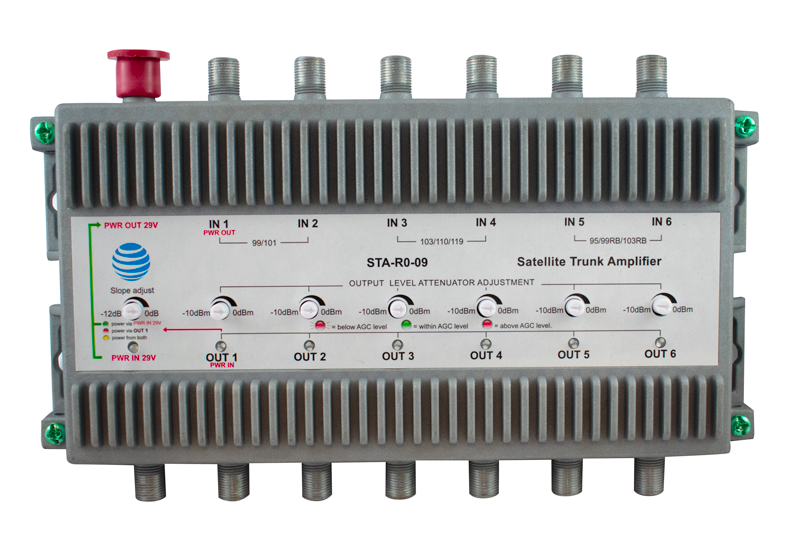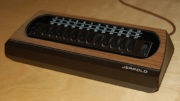Commercial satellite TV is about as different from residential satellite TV as you can get. That may seem surprising since commercial setups use pretty much the same parts as residential ones. But, you’ll also find some very specific parts in place that are rarely found in homes. The reason is simple: commercial setups need to be much more reliable. A lost satellite signal in a home is bad, but it’s a lot worse if it affects 50 TVs in a sports bar or 500 apartments in a senior living facility. Putting in commercial grade equipment helps everything run better, for a longer period of time.
The commercial specs for DIRECTV include the use of an amplifier and a polarity locker. But do you need these items in every commercial install? Here’s the information you’re looking for.
What a polarity locker does

This is DIRECTV’s PLPI polarity locker. It’s the latest and greatest in a line of approved polarity lockers. It looks simple enough, and yet most people don’t understand what a polarity locker does. Part of the problem is the name. Calling this device a polarity locker is accurate, but it skips over the most important feature.
The polarity locker isolates out the six specific signals used by DIRECTV satellite dishes, ensuring that one and only one travels down each line. This eliminates problems caused by improper wiring. Without a polarity locker, an improperly wired system might work at first and then it might stop working at weird times. With a polarity locker, it won’t work at all, meaning that the problem will be found before the installer leaves.
However, the polarity locker does something much more important. It provides a source of consistent power to the dish. This means that the rest of the system can be further than 50 feet from the dish and the power levels will stay consistent. It also means that if one part in the master closet is disconnected, the whole system won’t fail.
What an amplifier does

DIRECTV’s STA satellite trunk amplifier makes installations better by making sure there’s enough signal on the line. It’s designed to provide consistent output between -10 and 0 dBm, giving enough “oomph” to a signal to allow it to travel up to 200 feet from dish to master closet with ease. Along the way it also provides slope compensation. Slope compensation essentially means tailoring the amplification to make sure it’s consistent over long runs.
Regardless of the input level, this amplifier will always give an output level of -10 to 0. The exact level can be controlled with thumbscrews on the front. This makes installations easier because the installer doesn’t have to worry about what the input level, as long as it’s within reasonable tolerance.
But do you really need these things?
Your commercial DIRECTV system may work just fine without them. In fact, if you place the amplifier too close to the multiswitches in the master closet, you’ll have problems because the signal will be too strong. There are a lot of install scenarios where there’s just too much signal coming from the amplifier.
There are also situations, especially smaller installs, where the system is just fine without a polarity locker. However, in almost every case the whole thing will be more stable and easier to maintain if you do have that polarity locker in place.
The real key here is that while residential DIRECTV is a great DIY opportunity, commercial installations should really be done by trained commercial installers. If you are ready to upgrade to commercial DIRECTV, you’ll want to call the experts at Signal Connect. We have a nationwide network of installation professionals who will get your system done right. Our in-house engineers will create the specs for the system and provide them to a trained and certified on-site professional. It will get done right the first time and every time.
When you’re ready for your next commercial install, call us at Signal Connect! We’re here for you during East Coast business hours. Call 888-233-7563 and we’ll take great care of you! If it’s after hours, fill out the form below. We’ll get right back to you!





